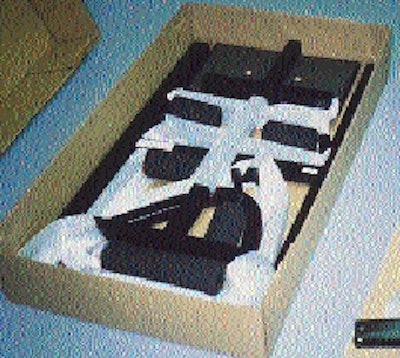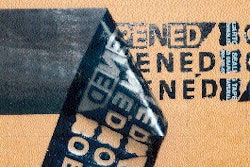
During peak production periods, thousands of pieces of exercise equipment, weight benches and home gym systems are produced daily at the three plants of St. Jerome, Quebec, Canada-based Allfitness Co. They leave this high-volume manufacturer headed for stores all over the U.S, including major retailers such as Montgomery Ward and Sears. They also export to England, France, Italy and Mexico. With merchandise traveling such vast distances, shipping quality becomes as important as the merchandise itself. Allfitness had been using a cohesive kraft paper to wrap its products for shipping, but found that the paper was not doing the job well enough. "Paper offered us very little protection," says quality control director Terry Cobb. "It simply didn't have the cushioning properties to protect parts from coming together with force during transit." Not to mention tearing and puncture problems, which left products exposed to further scratching. In addition, he says, "Products may sit for several months in non-climate controlled warehouses, where packaging caused humidity problems as a result of the glue on the cohesive paper becoming gummy and discoloring the products." Just over a year ago, Allfitness switched to Polyair's (Chicago, IL) Cohesive Air-Foam(TM), a blend of polyethylene resins formed into sheets that protect highly polished or fragile surfaces during transit. It consists of 1-mil linear low-density polyethylene coated with a cold-seal adhesive, which is then laminated to 1/16" of low-density polyethylene foam. "We went to several vendors of this type of product," says Cobb. "We brought in samples, did tests and came up with Poly-Air. The foam sheets give us the best results at the most economical price." Air-Foam is nonabrasive, yet has a high coefficient of friction. It's also lightweight, waterproof and offers good thermal insulation. Allfitness put foam samples through rigorous testing designed to simulate stressful shipping environments. Two standards were applied, for both North American and European shipping conditions. "In Europe, there are no loading docks like here in North America, so the European tests were much harder," Cobb explains. "The drop test height was three times that of the North American test, which assumed direct placement from loading dock to truck," he says. From varying heights, packages were test-dropped onto every edge and surface, then inspected for damage. These were performed repeatedly, with Air-Foam and other brands of protective packaging. A humidity test was also performed. "After the humidity test, some of the packaging products left an unpleasant, sticky residue on the wrapped parts," says Cobb. "Of all the products tested, Cohesive Air-Foam was the most economical, and was the only one that passed all our tests."























